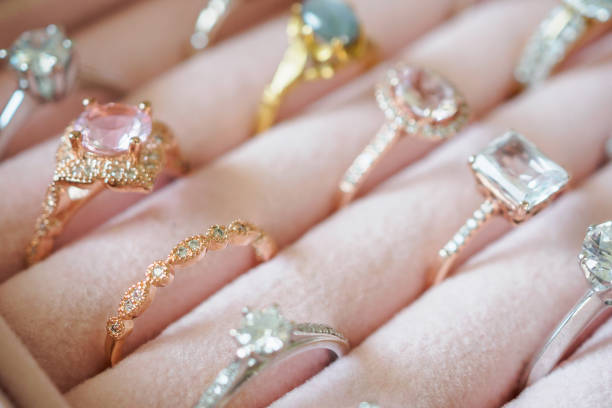Appreciating the Quality of Diamonds All Entries

The quality of diamonds, no matter how old or how pure, is usually a deciding factor as to whether or not experienced jewelers will pay top price for the gem. A diamond that has excessive flaws will have less value than one with minimal inclusions. Here's a closer look at how the quality of diamonds affects both aesthetics and market value.
Quality Beyond the 4C's
The 4C's that gemologists use to grade diamonds - cut, clarity, color and carat - form the basis of a professional diamond appraisal. But even if the stone gets high grades for each of the 4C's, the overall quality of the gem can significantly impact the price range. A diamond in excellent condition will command higher value than one exhibiting cracks or scratches with the same carat weight.
What Degrades Diamonds
Even though diamonds are the hardest gems on the planet, according to the Mohs scale, they can still be damaged in numerous ways. Yes, they are so hard they can scratch softer surfaces, but diamonds can be scratched as well, not just by other diamonds. The diamond's edge can be damaged if it bangs into something made of steel or stone. Despite the gem's strength compared with other jewels, its weakness is that it is brittle, making it easy to crack if struck on a hard surface like cement at a certain angle.
Diamonds, which are made of just carbon in their purest form, are flammable and can burn in a fire, which shows up in home insurance claims. Temperatures just above 1400º Fahrenheit can cause carbon to chemically react with oxygen. When heated to this level, a pure diamond transforms into a gas and vaporizes as carbon dioxide (CO2), so it vanishes. But a diamond mixed with other elements may leave residue as ashes. Meanwhile, a synthetic diamond can be severely damaged at much lower heat.
If you accidentally let a diamond slide off your finger into a boiling pot, the gem can probably take the heat. The hottest modern consumer stoves get to about 660º F. The biggest concern about heat with diamonds is fire. Here are some more common other ways a diamond's quality can be diminished:
- Lack of periodic cleaning
- Hit with a hammer
- Snagged on clothing
- Banged against a wall
- Dropped on a hard surface at a certain angle
Preserving Diamond Quality
You need to give a diamond proper care for it to maintain its quality and value. If you don't clean it regularly, it can begin to develop a cloudy appearance. That becomes a dead giveaway to experienced buyers you haven't been giving the gem regular maintenance. They will likely give a lower bid than you expect or just walk away if quality is their main concern.
Wearing a diamond ring every day exposes the stone to dirt, dust, and chemicals. It will start to lose its sparkle when this microscopic debris builds up. To maintain your diamond's quality, it's important to soak it in warm soapy water once every week or sooner if it looks cloudy. Gently use a soft cloth to dry the surface. Try not to touch the stone with your fingers, which contain oil that can reduce sparkle.
Conclusion
Protecting the quality of diamonds is crucial to holding and growing their value. The 4Cs are essential, but the gemologist's appraisal of the overall quality is what matters the most. Contact us at Ralph Mueller & Associates to learn more about the quality and value of diamonds. We've had decades of experience as GIA members giving fair and objective appraisals to jewelry buyers and sellers around the world.